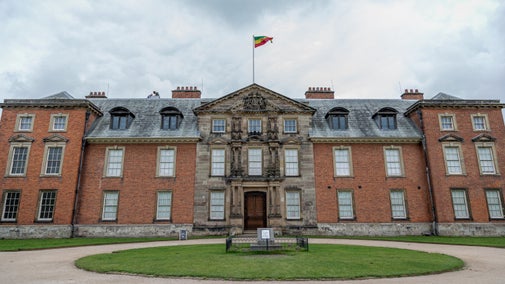
People in history
Discover some of the social history behind the places we care for and uncover fascinating facts about the people who have lived in them.

In 2019, we marked the 200th anniversary of the Peterloo Massacre with a project called People’s Landscapes, which explored the role that National Trust places have played in social change. Discover how we shared the stories of passion and protest connected to the country’s landscapes through a year-long programme of events, exhibitions and podcasts.
The Peterloo Massacre was one of the bloodiest political protests in the UK's history. In 1819, tens of thousands gathered in St Peter’s Field, Manchester, to campaign for parliamentary reform. When the military were called in, many were killed. The massacre became a critical moment in the fight for democracy and its reverberations can still be felt today.
To mark 200 years since the Peterloo Massacre we looked at the connections between National Trust places and the rights and beliefs we hold dear today. The year-long programme of events, podcasts and exhibitions explained how places we care for – and the people associated with them – have been vital to the development of our democratic rights, connections to protests and home to mass social movements.
Turner Prize-winning artist Jeremy Deller was the artistic advisor on the programme, working with four other artists to tell the stories of some very different places. The commissions were supported using public funding by the National Lottery through Arts Council England with additional support from Art Fund.
Some of the places we focused on included Runnymede, where Magna Carta was sealed; Tolpuddle, where modern trade unionism was born; and Quarry Bank and Dunham Massey, both of which were home to key players in the Peterloo Massacre.
Also in focus was the Durham Coast, home to years of industry but now a blooming site of natural interest; and the Peak District's Kinder Scout, a rambler's dream and where a 1932 mass trespass started conversations over land access.

The People’s Landscapes project was part of the Our Challenging Histories programme, which explores some of the more hidden aspects of the places in our care.
Each year we focus on a different theme that reflects national anniversaries and public debates and tell the stories which resonate most closely with National Trust places. People’s Landscapes was the theme for 2019.
As in previous years, we shared well-researched stories from a range of perspectives and explored a side of history that deserves to be told. We also celebrated the lives of our founders; social reformers who, by establishing the National Trust, opened up landscapes for all to enjoy.
A touring exhibition, in collaboration with the National Portrait Gallery, celebrated past and modern champions of nature and conservation.
The Peterloo Massacre was explored through the involvement of the owners of Quarry Bank and Dunham Massey, and through the work of artist family Grace Surman, Gary Winters and their children Hope and Merrick.
Artist and musician Jarvis Cocker also marked the 1932 Kinder Scout mass trespass and celebrated his own childhood memories of visiting the Peak District by connecting with Sheffield communities, schools and youth clubs.
We launched a podcast series to coincide with the anniversary and tease out more hidden stories behind these people and places of change.
The four-part People’s Landscapes podcast series, presented by radio journalist and broadcaster John Sergeant, tells the stories of people connected to four historic landscapes in our care.
You can hear the series on Apple Podcasts and Spotify.

Discover some of the social history behind the places we care for and uncover fascinating facts about the people who have lived in them.

Join presenter John Sergeant and guests in this podcast series exploring the connection between people and landscapes through the ages.

Many of the places we care for were home to impassioned people who campaigned both for and against women’s suffrage. Find out about these campaigners, from Laura McLaren and George Bernard Shaw in favour, to Lord Curzon who was against it.

Discover the musicians throughout history who have been inspired by the natural landscape and human stories in the places we care for in Sussex and the South Downs.

Discover the places and collections we care for that have connections to Black histories. Learn more about the people behind these connections, including the lady of the house at Dyrham Park in South Gloucestershire and an exiled emperor at Dunham Massey in Greater Manchester.